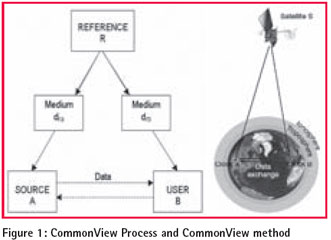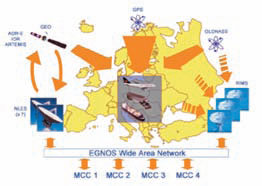Articles in the Articles Category

An earthquake, measured 8.0 on the Richter scale, struck Wenchuan County, Sichuan Province at 14:28 on May 12, 2008. The epicenter was at Yingxiu, a town in Wenchuan, as shown in Figure 1. As indicated in Figure 1, the middle segment of the Longmen Mountain earthquake zone encloses the epicenter, Yingxiu, with the Longmen Mountain zone being part of the north-south earthquake zone in China. According to records, there have been 9 earthquakes larger than a grade of 8 occurring in the north-south earthquake zone from 1739, and 7 of them were after 1897, when the greatest one was at Haiyun in 1920 and at Chayu in 1950, both of them measured 8.5.

Small and medium scale maps 1:50,000 up to 1:10,000 (possibly 1:5,000 in near future) at most can be replaced by High Resolution Satellite Imagery (HRSI), though we need ground survey of many objects which cannot interpreted from the HRSI. I agree that the cost performance to produce the smaller scale maps with HRSI would be much higher as compared with aerial photogrammetry if the cost of HRSI is not much high…

A central issue in designing complex networked systems for critical applicative domains is the possibility of keeping each node of the network synchronized with respect to a given system time scale. The problem is even more critical when the synchronization accuracy determines directly the performances of the whole system.
July 2008
International Summer Schoool on GNS
21 – 31 July
Berchtesgaden, Bavaria, Germany
http://www.munich-satellite-navigationsummerschool.org
August 2008
ESRI’s 28th annual International User Conference
August 4-8, 2008 in San Diego, California
http://www.esri.com
3rd Indonesian Geo-Information …
The soaring food price in recent months has been unprecedented.
Increased food prices could lead to increased poverty and unrest.
Even, UN call …

Beneath our feet in the UK lies a vast labyrinth of millions of kilometres of buried pipes and cables, delivering key products and services essential to our social and economic well-being. These networks of buried assets need repair and maintenance, and the growing demands of the UK economy mean that in years to come the networks will continue to grow significantly, as will the amount of traffic on the streets under which many of these assets lie.
There are now more companies involved in digging holes across the UK than ever before. Latest estimates put this figure at around 4 million holes dug by utility companies annually, and this excludes any excavations made as part of construction projects and works away from the street. Every time a hole is dug it impacts on traffic and the local environment. Often, holes turn out to be ‘dry’ – inaccurate information means that assets thought to be there cannot be found.

Very Long Baseline Interferometry (VLBI) is the unique space
geodetic technique which can provide the Celestial Reference Frame (CRF), the Terrestrial Reference Frame (TRF) and the relationship between the two frames — Earth Orientation Parameters (EOP) at the same time. VLBI has a widely usage in space geodetic, ground
geodetic, geophysical fields and so on. Presently, it can determine the position of the radio source outside the galaxy with 1mas precision, and determine several kilometers length of baseline on the earth’s surface with 1cm precision. Due to its high stability and high precision character, the Celestial Reference Frame outside the galaxy based on VLBI has been the best realization of the quasi-inertial referenceframe since 1980s. VLBI stations are the most important benchmarks in the International Terrestrial Reference Frame (ITRF), and VLBI is one main supporting technique which determines EOP. Till now, space and ground VLBI have accumulated more than 20 years’ data. They provide continuous and long-term data guarantee for space geodetic, ground
geodetic and geographical research.

The current GPS civil service provides suitable performance only in situations of good electromagnetic visibility; the positioning becomes difficult in severely signal degraded environments, e.g. mountainous or urban areas, where a lot of GPS signals are blocked by buildings or
natural obstacles. The GPS gaps can be partially solved employing spacebased augmentations systems; in this paper we consider geostationary and geosynchronous constellations. A simulation software has been developed in MATLAB® environment in order to study the integration of existent and feasible constellations.











 (5.00 out of 5)
(5.00 out of 5)